Favero Assioma DUO-Shi: Shimano compatibility for the cheapest power meter pedals on the market
The Italian outlier in the power meter pedal market is back with a cartridge system for Shimano users - but you'll need to be on board with wider Q-factor to adopt it. Here are our first impressions
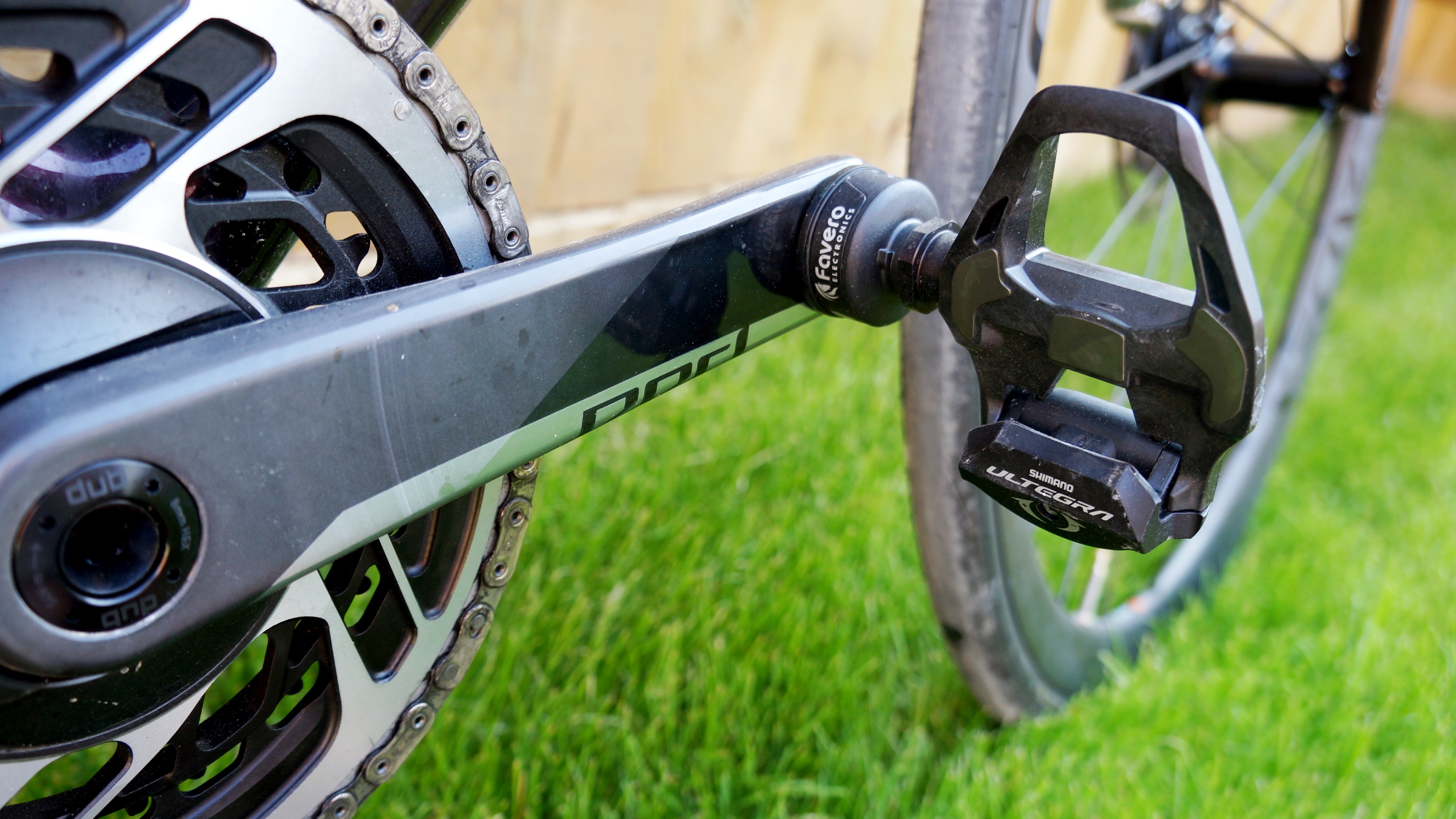
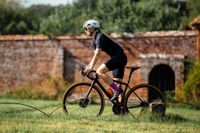
Favero has launched a Shimano-compatible system for its power meter pedals, ending months of speculation about the expected arrival from the extremely popular outlier.
The Italian brand is the smallest of the power meter pedal manufacturers - going up against the likes of Garmin and Look/SRM. But arguably, in this David and Goliath match, these guys have a well-loaded slingshot to compete with the giants.
Being lightweight, rechargeable and extremely reliable (in our testing experience), and much cheaper than competitors, Favero’s Assioma is a popular choice. And now, the DUO-Shi will cater for Shimano pedal platform users, where previously only those on Look Keo style cleats could join the party.
The new system is shipped as two cartridges, to be fitted to pre-owned pedals. And it looks good. But, not perfect - with the primary talking point among the Cycling Weekly tech team being the 65mm Q-Factor. That’s 11mm longer than the industry standard, at 54mm.
Tech specs
Favero’s new DUO-Shi is available as a dual-sided model only, unlike the DUO/UNO in the standard range.
The system is compatible with Shimano PD-R8000, PD-R7000, PD-6800, PD-R550 and PD-R540 pedal bodies. There have been riders hacking mountain bike pedals to accommodate Favero’s strain gauge spindles for some time, so it’s likely you may be able to fit them to other bodies, but it will void your warranty. The cartridges are not shipped with a pedal, you’ll need to BYOP to this power meter party.
The cartridge weighs 99g, a cartridge plus PD-R8000 pedal weighed 157g for us, which is exactly the weight Favero quotes. The adapter is made from aluminium, but the body which houses the nut used to tighten it and the pod is pastic (more on that later).
The latest race content, interviews, features, reviews and expert buying guides, direct to your inbox!
The Q-factor, as stated, is 65mm. A wider Q-factor will make for a wider stance width; the measurement defines how close together - or far apart - your feet are.
The Favero DUO-Shi's 65mm is significantly greater than the industry standard: 54mm. It wasn’t possible for Favero to wedge its pod against the pedal body, as it does with Look-style pedals, due to the nature of the Shimano spindle set-up.
Whilst nearly all riders are on a Q-factor of around 54mm, this has been picked up as an issue by some bike fitters. Wahoo/Speedplay pedals have long been the only option offering a longer spindle. This will suit riders with a wider pelvis - particularly women; I’ve been keen to try a longer spindle for a long time. However, for those who are happy with the status quo of around 54mm, this could represent a bike fit issue.
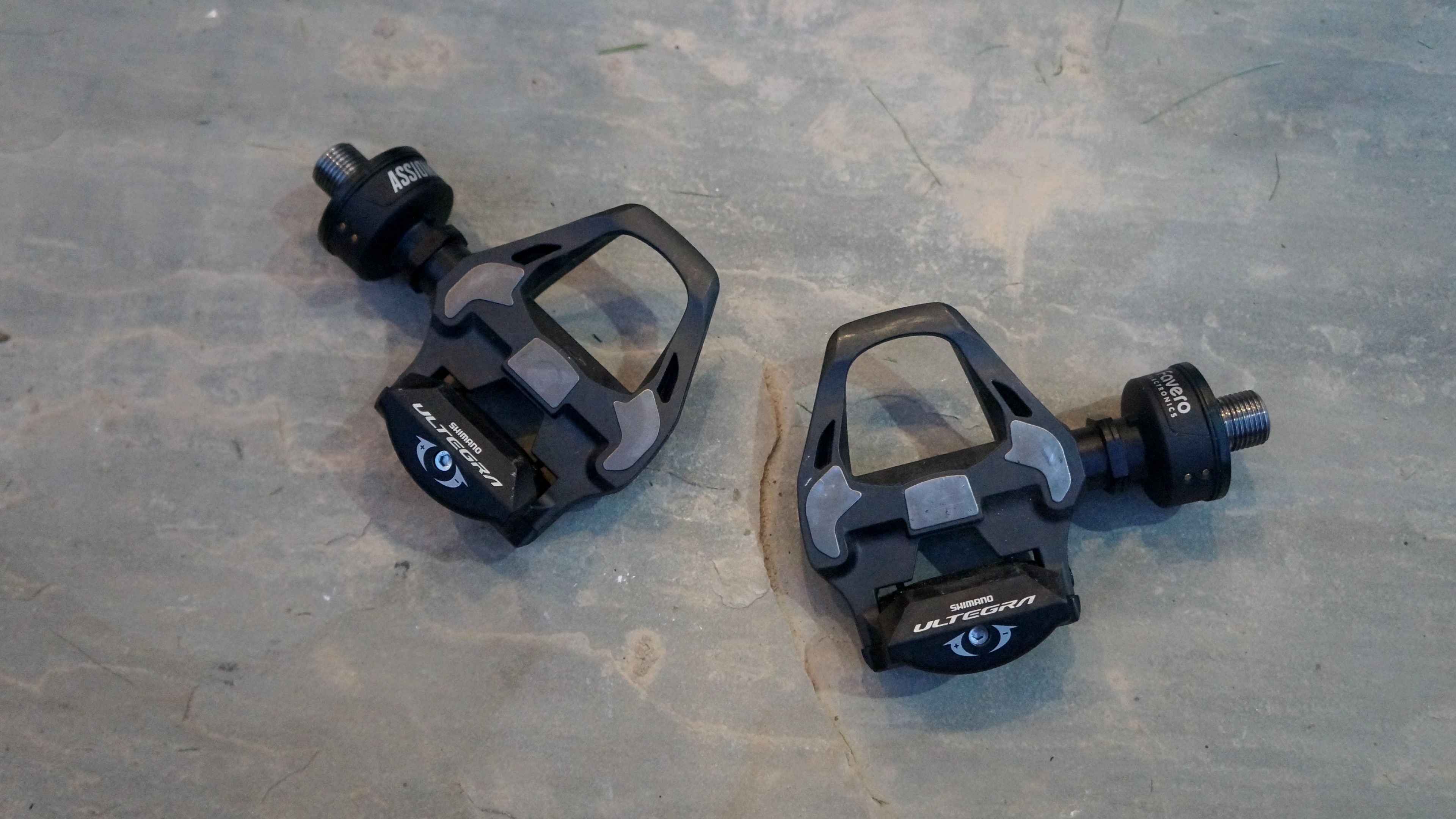
Commenting on the Q-factor change, Favero said: “At the very beginning of the development of this project, this was seen with some concern, as the Q-factor generally adopted in the market is of around +54mm. At the same time, though, we knew that the body size (height, pelvis width, etc.) is a subjective factor contributing to determining which is the best q-factor for each one of us.
"On the whole, the majority of our beta testers have accepted this change, giving us a surprisingly, positive feedback at the end of the tests. That’s why we are excited to hear from our customers what they think about it!”
Skip to ‘ride impressions’ for my own thoughts. However, being a female rider, with a fairly wide pelvis, my experience might not be yours - it remains to be seen what other users will make of this change.
As per Favero’s existing Assioma power pedals, they use Instantaneous Angular Velocity-based (IAV) power calculation, as opposed to the average angular velocity used by most. The brand says that this better takes into account human pedalling dynamics, which are not uniform - resulting in improved accuracy. Accuracy is near impossible to measure accurately truly without a lab and some serious (read: expensive) equipment, but having used Favero pedals long term, I have always been impressed by their reliability.
The rechargeable lithium battery lasts 50 hours, these transmit via Ant+ and Bluetooth and work between -10°C and +60°C.
The pricing isn’t entirely straightforward. In the UK, the Assioma DUO-Shi will cost €490 (£419) plus "possible custom clearance costs", and in the US, $589, plus "possible custom clearance costs". Regardless of the possible clearance costs, it's cheaper than the Garmin Rally (£969.99 for Look or Shimano or £1059 for SPD SL) and Look/SRM's collaboration (£1,280 at our last test).
Fitting the cartridges to pedals
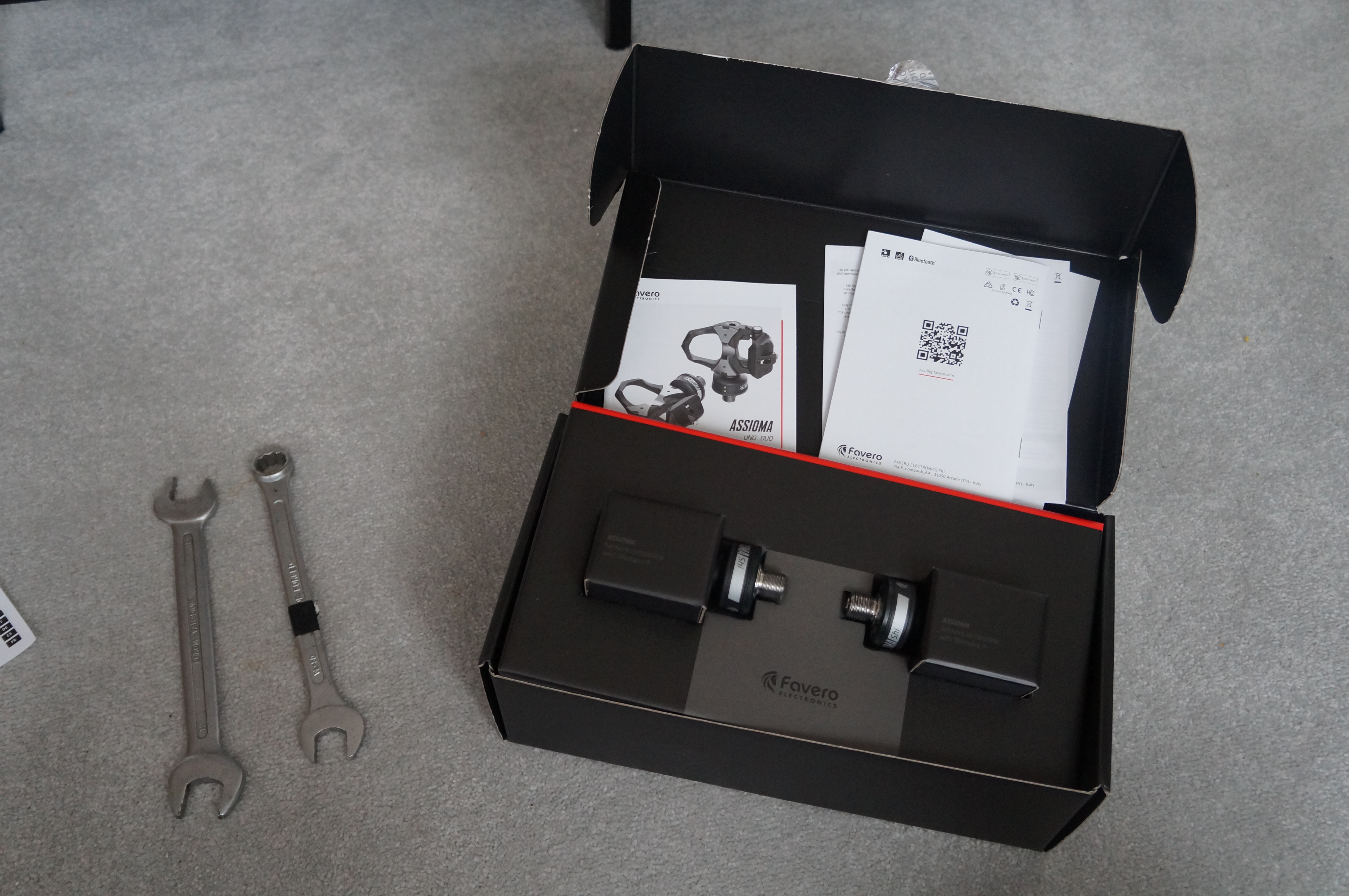
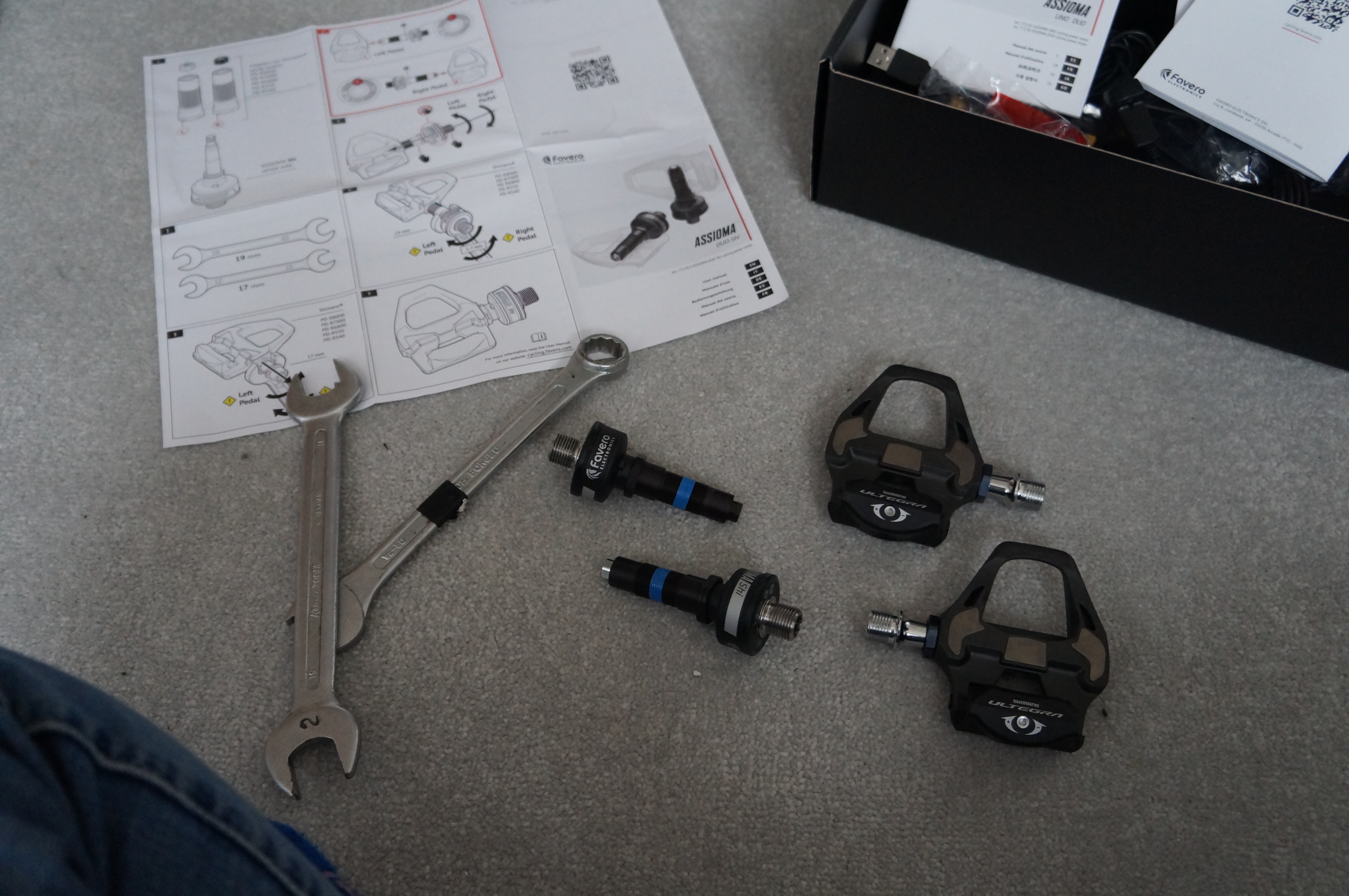
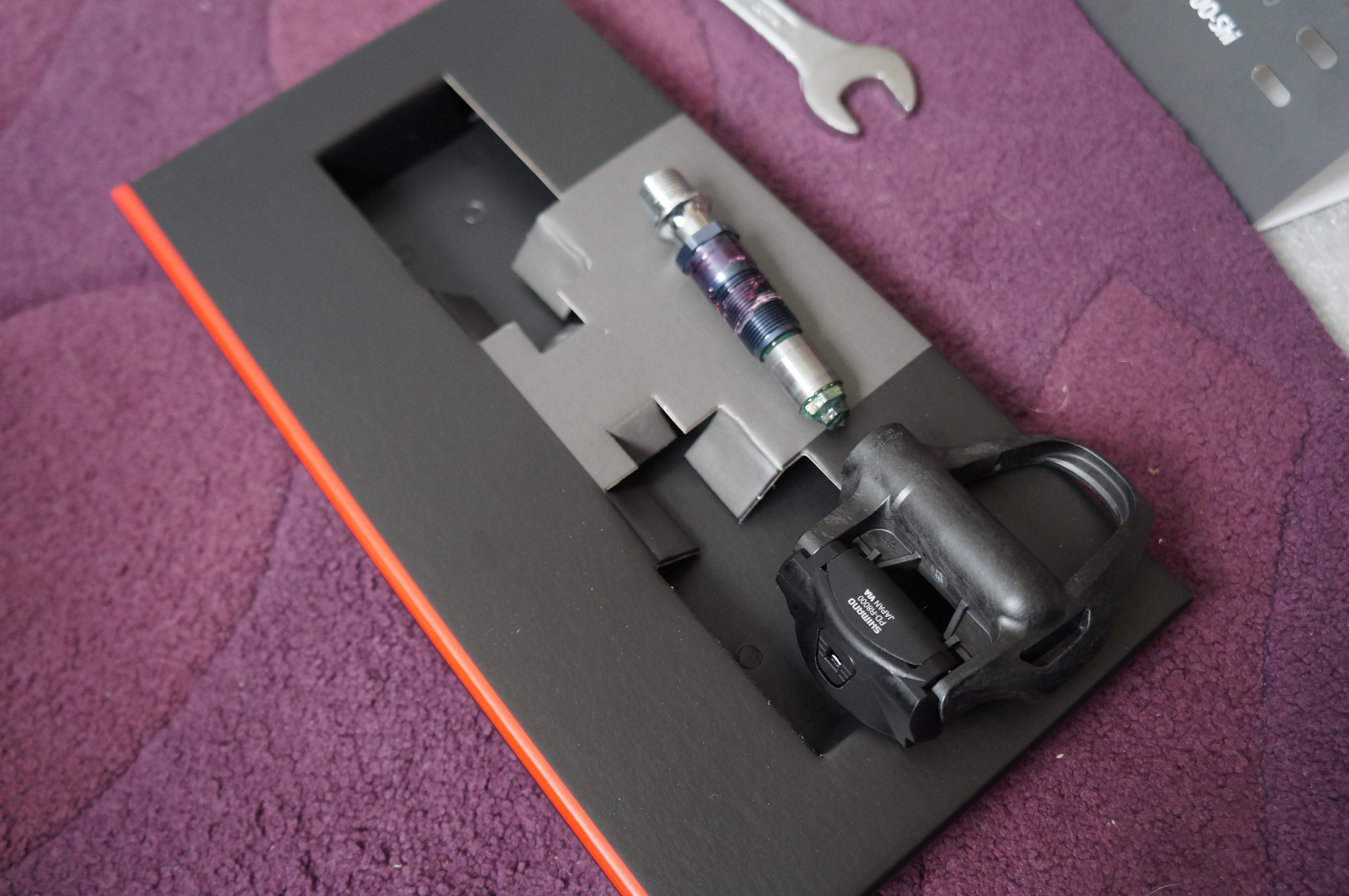

Pleasingly, this was extremely simple - and much less fiddly than the process used to swap Garmin Rally pedal spindles.
All you need is a 17mm and 19mm spanner. The 17mm spanner is used to remove the old Shimano spindle. Having loosened the nut on the existing spindle, this is removed, and then the new one threads in. Favero has added an oil retainer glued to the axle - so, don’t add grease. The new cartridge is meant to be torqued to 5-7nm.
Whilst the process was simple, I have two quibbles with it.
One: the cartridge is aluminium, and the nut on it is not made from the same quality steel as on the Shimano spindle I removed. Using a spanner on a more durable piece of metal would be my preference.
Two: there's five different toolboxes within my house, one for bikes, cars, electrics, generic 'house' and one just full of spanners. None of them contains a torque wrench spanner set, I've never needed one before. I’d wager that most cyclists won’t have one. The range of 5-7Nm is broad and quite common, so I imagine most people - like me - will assess this via hand.
When I asked Favero about this, its rep said: "Overall, bike components producers suggest a tightening torque to fix their components. This is mostly aimed at guaranteeing the security of final users. Consequently, we have also provided an indicative torque. In any case, the adapter can resist an even higher torque range than the suggested one. This means that even if the final user applies higher force, this wouldn't be a problem." Make of that what you will.
The ride
I received a 'good to test' notice on the pedals on Friday, with the launch on Monday, so time has been tight. However, I have managed to put 225km on them: one recovery spin, one hard and fast chaingang, and one long ride.
I didn't spot any eyebrow-raising numbers or dead spots, and the data was consistent with what I'd expect for each ride. I didn't have a chance to complete any intervals (or, didn't want to over the weekend!) but you'll get these in the full review.

Power data from the first chaingang using the Favero Assioma pedals (spot where I got dropped from the first group and joined the second group on the road!)
Reliability is a much longer term test, so that will have to wait. The pedal itself is of course a standard Shimano Ultegra pedal - so no qualms there, these have always reviewed exceptionally well.
The burning question on most interested parties' lips will no doubt be about the Q-factor. For me, it was good. I did notice the difference when making the first few strokes, but it was a welcome change. However, this is going to come very much down to individual experience. Riders with a narrow pelvis may be less enamoured.
So, has Favero cracked the power meter pedal conundrum for Shimano users? As long as you're OK with your feet moving outboard by 11mm on each side, then probably yes. You'll make a saving on the competitors, too - but it might not be good economics if you find yourself in need of new knees.
Michelle Arthurs-Brennan the Editor of Cycling Weekly website. An NCTJ qualified traditional journalist by trade, Michelle began her career working for local newspapers. She's worked within the cycling industry since 2012, and joined the Cycling Weekly team in 2017, having previously been Editor at Total Women's Cycling. Prior to welcoming her first daughter in 2022, Michelle raced on the road, track, and in time trials, and still rides as much as she can - albeit a fair proportion indoors, for now.
Michelle is on maternity leave from April 2025 until spring 2026.
